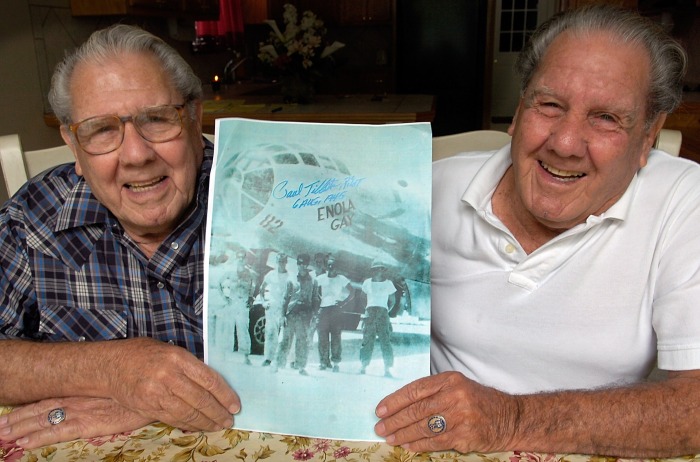 Leo Walsh spent three months as a Marine occupying Nagasaki, Japan, where the second atomic bomb blast led to Japan’s surrender. (Photo used by permission of The Advocate, Baton Rouge, Louisiana)
Leo Walsh spent three months as a Marine occupying Nagasaki, Japan, where the second atomic bomb blast led to Japan’s surrender. (Photo used by permission of The Advocate, Baton Rouge, Louisiana)
By George Morris
In more than 3½ years of combat, countless thousands of servicemen passed through Pearl Harbor, where World War II began for the United States.
Leo Walsh, of Baton Rouge, is in a more select company. He saw where it essentially ended.
Walsh was a private first class with the 2nd Marine Division when it was assigned to occupation duty at Nagasaki, Japan. There, on Aug. 9, 1945, an atomic bomb was used in warfare for the second and, so far, last time. Japan’s surrender was announced six days later.
 Stan Shaw holds a photo taken of him in a bomber cockpit during World War II. (Photo by Patrick Dennis, used by permission of The Advocate, Baton Rouge, Louisiana)
Stan Shaw holds a photo taken of him in a bomber cockpit during World War II. (Photo by Patrick Dennis, used by permission of The Advocate, Baton Rouge, Louisiana)